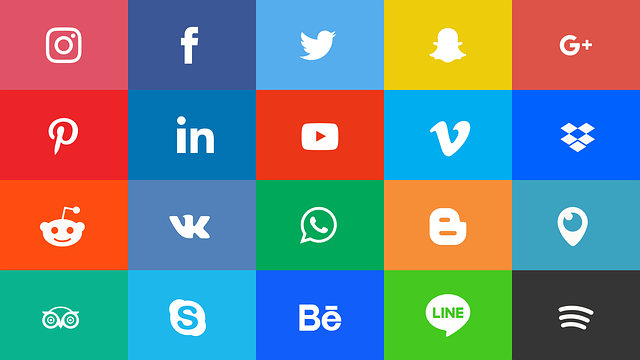Despite having been among the top five most-visited websites for some time now, the Google-owned YouTube has gone through numerous changes over the years while trying to figure out how best to present itself—a process many believe is still in full swing. In the interim, however, independent filmmakers and producers of every persuasion have been exploring what can be achieved on YouTube, often to great effect. No longer deemed as a stamping ground purely reserved for the amateur or semi-pro, YouTube has become a hugely viable distribution platform in its own right. The potential for audience outreach on YouTube, as well as the built-in monetization, is well publicized and has seen many independent projects reach stratospheric heights.
Creating video content specifically for online media sites has become so pervasive that it has necessitated its own insurance provider… but it’s not all smooth sailing in YouTube land.
Hiccups in Paradise

Regardless of the site’s popularity surge, for content creators it can often seem that YouTube is progressing on a two-steps forward, one-step back basis. Just as long-standing complaints are ironed out, Google will roll out changes which almost across the board baffle and irritate channel owners (such as the controversial new One Channel design which was made mandatory for all users, and the forced integration with Google+). In addition, the ad revenue split regularly comes under fire as being unfavorable with less than 50% going to the content creator—a big disparity when compared to other online markets such as the Apple app store which only takes 30%.
As such, it can be difficult to justify the effort for a professional filmmaker who spends years getting through producing school, creates and uploads quality work, pushes hard to gain an enviable audience of thousands, and receives a virtual pittance in recompense.
But detractors be damned, perhaps, since Google almost has a monopoly in this area. After all, it’s a hard service to compete against given the astronomical costs of hosting this volume of streaming media—although Google keeps official operating costs under its hat, it has been estimated to burn anything around $500m a year and up just to keep servers running.
As such, there’s only a handful of competitors operating today that pose any kind of real threat.
Chief among them is Vimeo. How does it stack up against the ubiquitous YouTube, particularly for independent producers?
Failing Where the Other Succeeds (and Vice Versa)

We’ll have to start off on a negative here since it’s the most obvious difference between Vimeo and YouTube. The basic account only allows for 500Mb per week of video uploads and only standard encoding of videos (which all display banner ads). Naturally, this is a big drawback for filmmakers—not in terms of file volume, but file size given that most projects these days are shot in HD and even a five-minute short can max out the 500Mb limit in a single file.
The Vimeo Plus account (at $9.95 a month or $59.95 for the year) is a bit more forgiving with a higher limit of 5Gb per week of storage space and unlimited HD uploads. However, this is all academic anyway.
If the uploader is looking to produce commercial videos, they’re obligated to sign up for a Pro account. As this caveat will apply to most producers, this will set them back $199 and there are still limits on the amount you can upload, but as of last October this has been upgraded to 20Gb a week or 1Tb a year. Fine for most usage, but it’s still a limit that YouTube doesn’t enforce.
Another downside is the lack of editing options within Vimeo itself, although the rudimentary video editing features offered by YouTube are usually ignored by anyone with even basic post-production skills anyway.
But let’s get onto the good stuff. One major benefit to Vimeo is the ability to create unlimited channels. While YouTube technically has this capacity, multi-channel management via Google accounts is cumbersome at best. This kind of feature is ideal for those who want to host one channel featuring polished film work and another to host a production vlog or other supplementary material.
Vimeo also has the edge over YouTube when it comes to social sharing. Given that the latter is owned by Google, it’s not surprising that YouTube is mainly geared around G+ sharing and only provides cursory tools for Facebook and Twitter sharing. Vimeo, on the other hand, has no such biases and users are able to fully link their video content with a whole plethora of social media accounts. In the long run, this has a noticeable benefit to the amount of viewers attracted through natural, cross-platform sharing.
Another point worthy of note is that Vimeo has recently implemented pay-per-view functionality, a feature-oriented YouTube have been struggling to get off the ground so far. While it won’t be a revenue model every filmmaker or producer will want to explore, the in-built tip jar feature is a solid alternative for raising money from an established fan base.
But perhaps the biggest kick in the teeth for YouTube is Vimeo’s 90/10 profit split on their On Demand service (which is available to Pro account holders only). That is a figure which will give any filmmaker serious pause for thought, and one which competitors are going to have a hard time trying to catch up to.
The Perfect Solution for Feature-Length?
![]()
On the face of it, at the time of writing Vimeo seems more geared up towards being a feature-length film distribution service (particularly given its quicker upload times and monetization structure). Of course, this is only useful to producers if there are people on the platform to actually consume their content—while Vimeo’s 60+ million visitors per month is nothing to be sniffed at, the fledgling service have a long way to go to catch up to YouTube’s 800 million.
But the online video sphere is changing at a phenomenal rate, and it remains to be seen which way each services will evolve and grow over time.
In essence, independent filmmakers and producers will always find ways to innovate, both in a creative and a business sense.
Where they will ultimately choose to do so is still anyone’s guess.